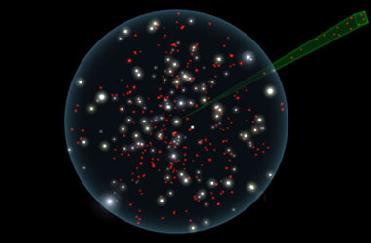The Hayabusa capsule's heat shield after it landed in Australia earlier this month. A JAXA photo
TOKYO (AFP): Japan�s space agency said it had found a trace of gas in a capsule thought to contain asteroid dust that was brought back to Earth after a multi-billion-kilometre space journey.
Researchers at the Japan Aerospace Exploration Agency�s Sagamihara Campus in Kanagawa began opening the Hayabusa capsule on Thursday, a process expected to take about a week, JAXA said.
Using an optical microscope, they plan to analyse the inside of the container, which was shielded by a Frisbee-sized capsule.
Opening the capsule on Thursday, they collected a trace of gas, a JAXA spokeswoman said.
�We still don�t know exactly what kind of gas it is, but the researchers confirmed a trace of low-pressured gas in the capsule,� she said.
Scientists hope any dust samples from the ancient asteroid in the capsule could help reveal secrets about the origins of the solar system.
�If the capsule contains fragments of at least 10 micron (0.01 millimetre), researchers can make an analysis,� the spokeswoman said.
But it will take at least a few more months before they determine whether the sample comes from the potato-shaped Itokawa asteroid or not.
After a seven-year space odyssey, the heat-proof pod was fired back to Earth by the Hayabusa probe earlier this month after a five billion kilometre journey.
Technical problems plagued Hayabusa, which at one stage spun out of control and lost contact with JAXA for seven weeks, delaying the mission for three years until the asteroid and Earth re-aligned.
When it finally latched onto the Itokawa asteroid, a pellet-firing system designed to stir up dust malfunctioned, leaving it unclear how much material the probe was able to gather.
 Previous Article
Previous Article Next Article
Next Article












The Indian Air Force, in its flight trials evaluation report submitted before the Defence Ministry l..
view articleAn insight into the Medium Multi-Role Combat Aircraft competition...
view articleSky enthusiasts can now spot the International Space Station (ISS) commanded by Indian-American astr..
view article